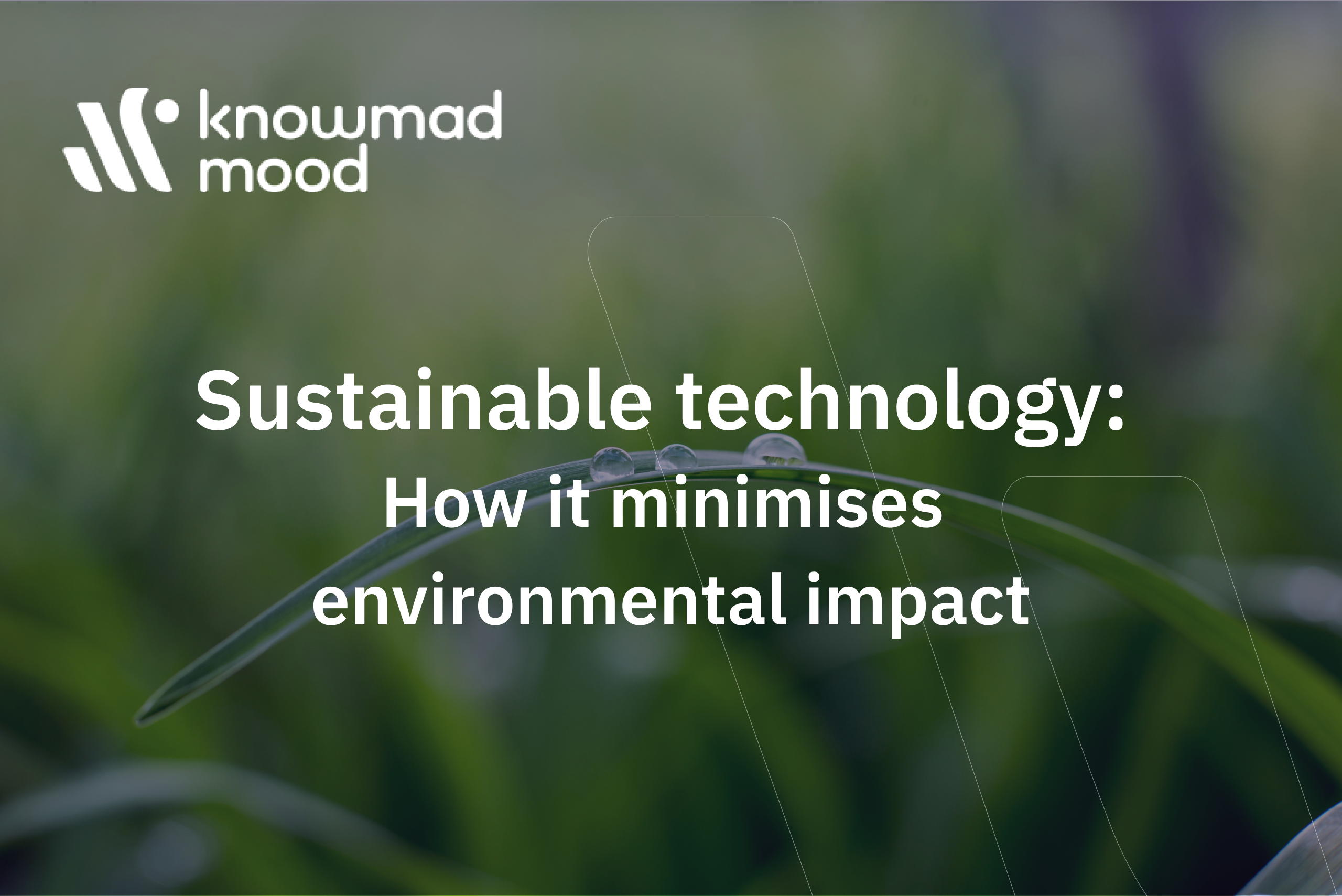
Sustainable technology: How it minimises environmental impact
Sustainability and social responsibility are strategic pillars for companies around the world. According to the UN’s World Meteorological Organisation, 2023 was the hottest year in 174 years, and 2024 is expected to follow suit. In this sense, sustainable technology is a powerful tool to minimise the environmental and social impact of companies’ processes, products and services. In fact, according to a study by Research and Markets, the market for green and sustainable technology will grow by almost 30% annually until 2027.
The rapid advance of digitalisation in recent years has allowed the emergence of a multitude of technological solutions aimed at increasing sustainability and reducing the impact of the activity of companies around the world, from solar panels to Artificial Intelligence or Big Data. That’s why, knowmad mood, a leading technology consultancy in digital transformation solutions, wanted to bring together the keyways where sustainable technology contributes to this:
Optimal use of resources and lower maintenance costs
The planet’s resources are limited, so making the most of them is one of the great challenges not only for companies, but for society in general. Optimising their use is essential and technology can help to achieve the same or even better results using less energy, which is essential in the context of climate change. Examples range from Artificial Intelligence to the cloud, both of which allow for lower investment in infrastructure and boost business efficiency and productivity. 77% of companies seeking sustainable transformation will leverage AI automation in their processes by 2025, according to IBM.
Reductions in the effects of global warming
Digitalisation and technology are some of the greatest allies in protecting the planet, thanks to the fact that they allow for better waste management, as well as increasing the use of renewable energies, from solar to hydroelectric. This ultimately leads to a reduction in greenhouse gas emissions and in companies’ dependence on fossil fuels. A great example of this are electric vehicles or solar panels, which allow the collection of solar energy emissions by converting it into electricity and therefore reducing emissions. As a report by the Spanish Photovoltaic Union points out, this technology has avoided the emission of more than 14 million tonnes of CO2 in our country.
Climate risk forecasting
Weather forecasting is the best way to protect against weather phenomena, as it helps to create solutions to slow the advance of climate change. For example, in Artificial Intelligence, machine learning and data analytics in general, it is not only possible to monitor in real time the temperature of the oceans and air pollution, but also to detect patterns in the evolution of the atmosphere and climate through massive data to map and predict climate catastrophes. According to the WMO, AI has already improved the effectiveness of weather forecasts by 25%.
“Technology is the key to solving not only our day-to-day problems, but it also has the potential to shape a better world, with AI being the clear example of this today. We are now seeing it emerge as an ally for businesses in a world increasingly focused on sustainability and reducing environmental impact. The combination of AI and sustainable development will undoubtedly support any industry in designing a better planet, showing that it is possible to meet the needs of people without compromising future generations,” says Jessica Iglesias Sánchez, Director of Marketing, Communication and Corporate Responsibility at knowmad mood.

